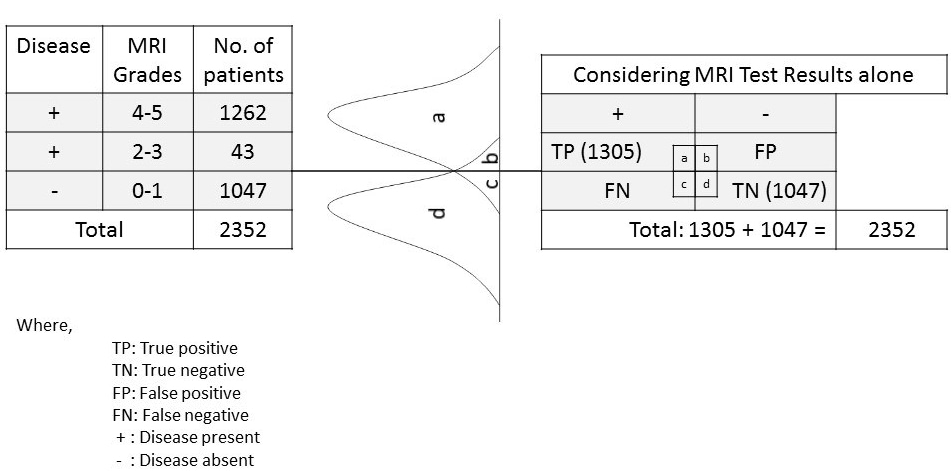In this section, the true positive and negatives rates of diagnosing a disease using a clinical test (eg., SLR) compared against a gold standard test (in this instance, MRI) will be calculated.
Let us use the following data from a peer-reviewed article for our analysis (1). In this study, the patients who had lumbar MRI grades 2 to 5 (gold standard criteria) were considered having the disease.

Now, let us determine the performance of a clinical test (SLR) against the gold standard diagnosis (MRI). This is done by determining the true positive and negative rates of diagnosis by the SLR test when compared against the gold/reference standard.
Consider the final results from the SLR validity study (1).

The true positive rate (sensitivity) represents the measure of a diagnostic test’s (SLR) ability to detect the presence of the disease correctly determined by the MRI scans.

The true negative rate (specificity) represents the measure of the SLR test’s ability to detect the absence of the disease correctly determined by the MRI.

References:
- Capra, F., Vanti, C., Donati, R., Tombetti, S., O’reilly, C. and Pillastrini, P., 2011. Validity of the straight-leg raise test for patients with sciatic pain with or without lumbar pain using magnetic resonance imaging results as a reference standard. Journal of manipulative and physiological therapeutics, 34(4), pp.231-238.